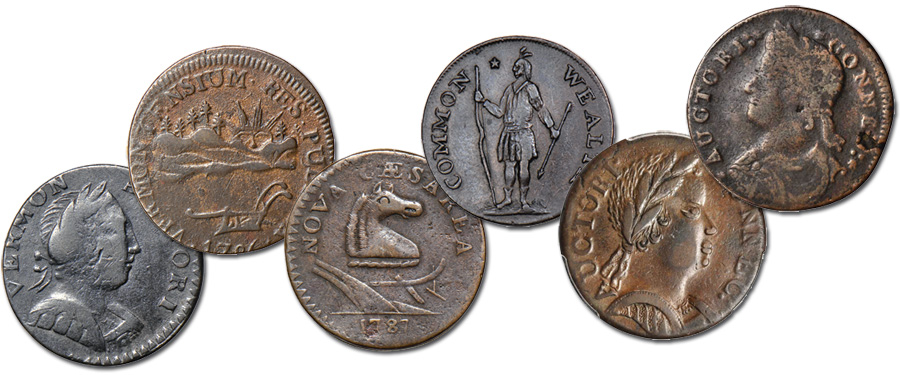
Question: I’ve noticed that most United States coins are alike within a given era, say Capped Bust half dollars of 1807 to 1836 or Liberty Seated dimes of 1838-1859. While not identical to specialists, they are all of a similar type. My question is simple: why are the “colonial” issues all of different types, even within a given state?
Answer: A great question and one that has numerous possible answers! The Guide Book lists many styles of early American (pre-U.S. Mint) coins, some made by states, others by private individuals, and others still in England and elsewhere. Some were made on contract to authorities while others were privately designed. The states began their own coinage in 1785 when the Republic of Vermont (soon to be a state) made copper coins somewhat smaller than English halfpenny size. Their first issues had a mountain scene, which was soon followed by coins with a bust on the obverse. Numerous die sinkers worked on the series, and most of the designs are unique because of it. The same holds true for Connecticut coppers (1785-1788), New Jersey coppers (1786-1788), and Massachusetts coppers (1787 and 1788), though this state’s coinage was much more uniform than any of the others. Perhaps Connecticut has the greatest diversity with its Draped Bust Left or Right, Mailed Bust Left or Right styles along with such colorfully named types as the “Scholar’s Head,” “Hercules Head,” and “Mutton Head” designations. Good die sinkers were hard to come by and most issuers settled for whatever an artist could deliver, thus the great diversity as illustrated in the opening pages of the Red Book. Just a Red Book type set of Connecticut coppers alone, as illustrated on page 60 of that reference, would keep a collector busy – and happy – for many moons. Perhaps it’s the diversity of these early issues that makes them so popular today!





